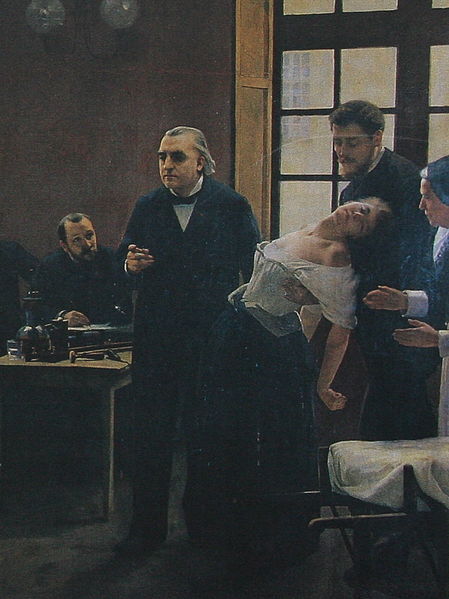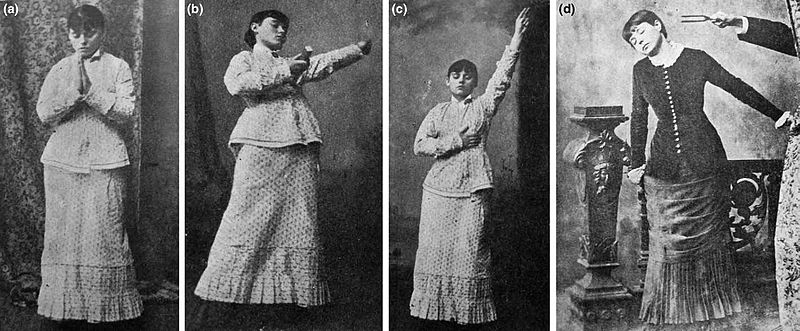 Whenever one paradigm gives way to another in science, the transition is traumatic. Hard-earned knowledge from the earlier perspective cannot be meaningfully compared with new research in the next paradigm, because even the language of the new scientific generation is slightly different. Information is lost or devalued. Such is the price of progress.
Whenever one paradigm gives way to another in science, the transition is traumatic. Hard-earned knowledge from the earlier perspective cannot be meaningfully compared with new research in the next paradigm, because even the language of the new scientific generation is slightly different. Information is lost or devalued. Such is the price of progress.
The coming revolution – and I don’t use that term lightly – in psychiatry promises to be so disruptive that the creators of the field’s bible, The Diagnostic and Statistical Manual of Mental Disorders (DSM) have been forced to delay the publication of their next (5th) edition. It was originally scheduled for this year, but won’t be out now until 2013 when they have figured out how to accommodate the looming storm.
As a Master’s student in Counselling Psychology, I know many of the textbooks I bought this year – the honking great thing called Synopsis of Psychiatry: Behavioral Sciences/Clinical Psychiatry and the more readable Diagnosis Made Easier: Principles and Techniques for Mental Health Clinicians, for example – will be obsolete when I graduate in two years.
For 150 years, psychopathology has been categorizing mental disorders as if they were discrete entities. The DSM, published every ten years or so since the early 1950s, adheres to this tradition, categorizing each illness and sub-illness in neat little packages. You’ve got your mood disorders and anxiety disorders, your eating disorders and sleeping disorders, your schizophrenias and dissociative disorders. Within these categories are more specific variants. For example, in “Impulse-control disorders not elsewhere classified” we find intermittent explosive disorder, kleptomania, pyromania, pathological gambling, trichotillomania, and impulse-control disorder not otherwise specified. All a clinician must do is check off a list of symptom criteria, and if a client meets them, they have the disorder.
 The categorical approach has served doctors well for communicating with each other, and it makes life simpler for people trying to make insurance claims and the like. Trouble is, it doesn’t reflect clinical reality. There are more than 100 combinations of symptoms that could lead to a schizophrenia diagnosis and many of the resulting schizophrenic clients will require vastly different treatments. Some treatments, like serotonin reuptake inhibitor drugs, can treat a wide variety of disorders from eating and mood disorders to anxiety.
The categorical approach has served doctors well for communicating with each other, and it makes life simpler for people trying to make insurance claims and the like. Trouble is, it doesn’t reflect clinical reality. There are more than 100 combinations of symptoms that could lead to a schizophrenia diagnosis and many of the resulting schizophrenic clients will require vastly different treatments. Some treatments, like serotonin reuptake inhibitor drugs, can treat a wide variety of disorders from eating and mood disorders to anxiety.
The balance of research has shifted toward the notion that psychiatric illness exists on a continuum. Just as evolutionary trees have had to be revised after genetic sequencing revealed true paths of ancestry among species, the genetic relationship among mental illnesses is proving counterintuitive. Bipolar is genetically linked to schizophrenia, but not to its fellow mood disorders. Generalized anxiety disorder is found to coexist more often in the same client along with major depression than it is with other anxiety disorders like social phobia or OCD.
As evidence mounted, the American Psychiatric Association declared itself ready radically to restructure the categorical DSM-IV into a dimensional DSM-V. Severity would be rated on a scale of 0 to 5. Spectrum disorders would be more prominent. Cross-cutting symptoms like substance use and sleep problems would be assessed on their own merits. A quantifiable baseline of life functioning would be assessed at the first meeting and tracked throughout the course of treatment. The big year was to be 2011 and a new dimensional psychiatry would be born.
In anticipation of the switch, Yale’s Benjamin Rottman and his colleagues tested out one of the new dimensional revamps, in the area of personality disorders. The personality disorders specified in the DSM-IV are in some sense maladaptive variants of the Big Five personality trait dimensions (Extraversion, Openness to experience, Conscientiousness, Neuroticism and Agreeableness). Each is fairly well correlated with one or more trait. The schizophrenia-like symptoms of paranoid PD and schizotypal PD reflect high Neuroticism and low Agreeableness, with Schizotypal patients tending toward Introversion. Compulsive personality disorder with its perfectionistic fixations is, unsurprisingly, correlated with high Conscientiousness. The new DSM-V would describe these traits and have clinicians work backward to the personality disorder. Unfortunately, when Rottman tested actual clinicians on their ability to diagnose, traditional criteria proved much more useful. Doubtless, over time, clinicians trained under the new system will become adept at diagnosing using a dimensional model, but this is cold comfort for any casualties of the disruption.
As the DSM-V’s release date has been pushed back to 2013, the talk around psychiatry’s paradigm shift has mellowed to a conciliatory tone. A mixed-model is the likely outcome. This will bring psychiatry in line with the rest of medicine, which combines categorical and dimensional approaches – hypertension (categorical) and blood pressure measurements (dimensional), for example. Until then, I’m taking my psychopathology homework a little less seriously.
Images from Wikimedia Commons:
Professor Jean-Martin Charcot teaching at the Salpêtrière in Paris, France: showing his students a woman (“Blanche” (Marie) Wittman) in an “hysterical fit”.Wittman is supported by Charcot’s student Joseph Babinski. Painted in 1887 by André Brouillet.
“Behavioural” experiments under hypnosis at the Budapest clinic of the Department of Mental Health and Pathology. (a) Hypnotic suggestion of praying. (b) Hypnotic suggestion of suicide. (c) Hypnotic suggestion of swearing an oath. (d) Hypnosis produced by the tuning-fork. Photographs reproduced from Ka´roly Laufenauer.
Am I unbearably frivolous to be noticing Charcot’s patient’s state of incipient undress? Let’s say he was listening to her heart or lungs. Let’s say the painter threw in a lady-nakedness to spruce up the dull fully-clothed doctors. Let’s just say I’m easily annoyed.
He was famous for putting on a show. I think the decolletage is meant to indicate that she tore at her own clothes in a fit of hysteria. In front of an audience of leering men. Even Freud, who studied Charcot’s methods, eventually abandoned them for lack of supporting evidence — and that’s saying something.
Thank you, Jessa. I feel less frivolous. I have another question: how much faith do you put in those genetic linkages between, say, schizophrenia and bipolar disease? How solid are the matches between the genes and the diseases anyway?